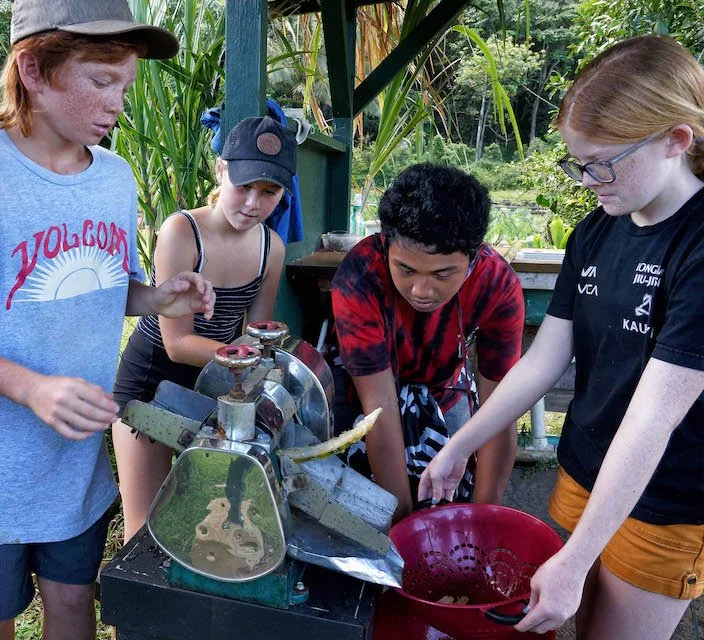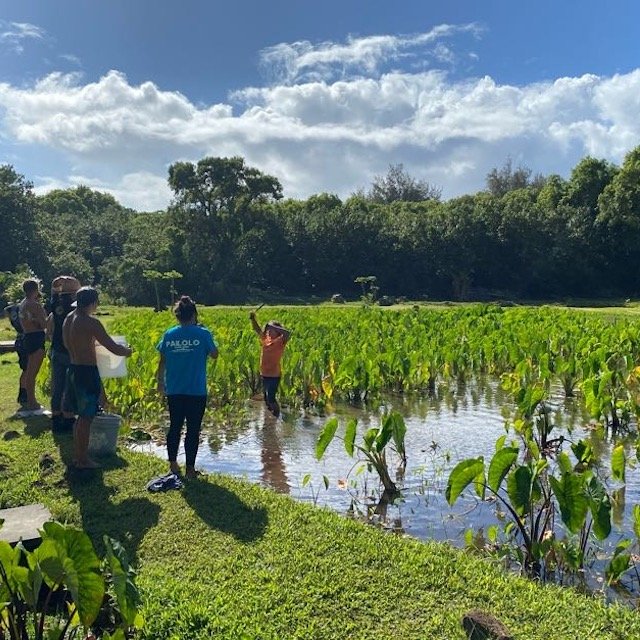ʻĀina-Based Learning
ʻĀina-Based Learning cultivates students’ connection to and sense of responsibility for their home. It helps them to explore and understand their own identity through exploration of the environment, culture, and history of Hawaiʻi.
ʻĀina-Based Learning
ʻĀina-based learning offers a dynamic instructional approach in which students explore real-world problems and challenges through an ʻāina-conscious lens, which helps them to gain interdisciplinary, systems-level thinking that emphasizes resilience, sustainability, and health.
Because it combines project-based, community-driven, and place-based learning approaches that are characterized by active and engaged learning, this model helps students to gain a deeper knowledge of the subjects they are studying while developing strong relationships with their geographic home and community.
Research also indicates that students are more likely to retain the knowledge gained through this approach than through traditional textbook-based learning. In the process of completing their projects, students also hone their organizational and research skills, develop better communication with peers and adults, and see firsthand the positive effect of their work within their community.
Critical Thinking, Problem Solving
ʻĀina-based learning encourages students to reflect on how their actions affect the integrity of their home, wherever that may be. Whether students’ interests are geared towards college or career, becoming a lawyer or a farmer, they embrace an awareness and sense of responsibility as it applies to all disciplines and professions.
In ʻāina-based learning, students learn about their unique social and geographical context; strengthen their relationship with its natural resources; cultivate connections within their communities; and ultimately seek to improve the world they live in with an integrated understanding of how all these assets underpin a more resilient future.
ʻĀina-based learning provides a rich context for integrating academic and career skills into holistic, applied learning by developing critical thinking and problem solving, communication and team-building, and political consciousness, while aligning with our core value of “Aloha ʻĀina.”
School Farm Program
Namahana School is surrounded by farms, irrigation ditches, and a long history of plantation agriculture, which students will have multiple opportunities to explore. One example among many is the neighboring Kaua‘i Food Forest, a 2.5 acres agroecosystem located next to the school, where students will receive mentorship and hands-on training in field studies and internships.
To fully embrace the potential of its location, Namahana’s outdoor learning spaces will eventually include a school farm where students can access the full range of knowledge (biological, geological, historical, social, cultural, nutritional, etc.) implicit in the food production cycle.



